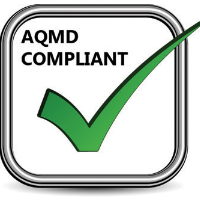Industry Applauds SoCal Air Board for Rejecting Staff’s Stricter Pollution Standards

Early last week, Angela Johnson Meszaros, an attorney for the nonprofit law firm Earthjustice, told the Los Angeles Times that Friday’s vote by the board of the South Coast Regional Air Quality Management District (AQMD) “is the single most important vote to reduce smog that this board will take in this generation. . . . The fundamental question is whether the board is going to protect the health of people in this basin or cave to industry.”
On a 7-5 vote, the board rejected a staff recommendation to cut nitrogen oxide emissions by more than half over the next seven years and opted for a less-exacting standard favored by industry groups. “We’re very thankful that at least we have a balance. It’s an expensive and aggressive one, but we’re up for the challenge,” Cathy Reheis-Boyd, president of the Western States Petroleum Association, told KPCC.
The district writes the clean air standards for stationary pollution, including smokestack emissions from 275 facilities, in much of the Los Angeles Basin. Those polluters have managed to maintain the awful pall that still hangs over the basin, in part thanks to the state’s cap-and-trade program that lets them buy clean air elsewhere.
The once-aggressive pace of nitrogen oxide reduction, begun in the 1960s, has flattened out, a tad short of clean-air goals. The South Coast region is still one of the nation’s smoggiest.
The AQMD does not regulate each pollution source, as districts in the Bay Area and elsewhere do, and its program to reduce pollution using broader strokes has not worked. But the board oversees cap-and-trade in the area and regulates the number of nitrogen oxide pollution credits a company can buy in the market for its facility. A reduction in the number of available pollution credits was inevitable.
The staff recommended a cut from 26.5 million tons of nitrogen oxides per day to 12.5 million. The board opted for 14.5 million. Fifty-six of the facilities, mostly power plants and refineries, are said to be covered by the regulation.
“We didn’t get what we needed,” Marina Barragan, a community organizer for the Sierra Club, told KPCC at the board’s Friday hearing. “It’s been a harsh week. It feels like we’re getting punched from all ends.”
Around 25% of the region’s smog comes from the stationary sources overseen by the AQMD. The other 75% are mobile sources like cars and trucks, which the U.S. Environmental Protection Agency (EPA) and California Air Resources Board (CARB) mostly handle.
Last month, in the middle of the contentious run-up to Friday’s vote, the 13-member AQMD board underwent a transformation. Ten of the board members are elected officials from the region, which includes at least parts of Los Angeles, San Bernardino, Orange and Riverside counties. The remaining three are chosen by the governor and leaders of the Senate and Assembly.
Orange County cities voted to replace their representative, Democratic Santa Ana Mayor Miguel Pulido, a green energy advocate, with Republican Lake Forest Councilman Dwight Robinson. After the vote to add him, Robinson said, “Many of the things AQMD has been doing over the last decade have driven companies, jobs and the middle class out of Southern California.” He promised to balance “sensible environmental stewardship with middle-class job retention.”
–Ken Broder
To Learn More:
Southern California Regulators Soften Pollution Requirements on Refineries (by Jed Kim, KPCC)
Regulators OK Weaker Version of Air Pollution Program for Southern California (by Tony Barboza, Los Angeles Times)
Regulators vs. Business: The New Battle over Clean Air in California (by Aaron Orlowski, Orange County Register)
Southern California Air Quality Board Set to Vote on Stricter Emissions Standards (by Tony Barboza, Los Angeles Times)
Orange County Politics Give Regional Air Board a GOP Tilt (by Ken Broder, AllGov California)
- Top Stories
- Controversies
- Where is the Money Going?
- California and the Nation
- Appointments and Resignations
- Unusual News
- Latest News
- California Forbids U.S. Immigration Agents from Pretending to be Police
- California Lawmakers Urged to Strip “Self-Dealing” Tax Board of Its Duties
- Big Oil’s Grip on California
- Santa Cruz Police See Homeland Security Betrayal in Use of Gang Roundup as Cover for Immigration Raid
- Oil Companies Face Deadline to Stop Polluting California Groundwater





